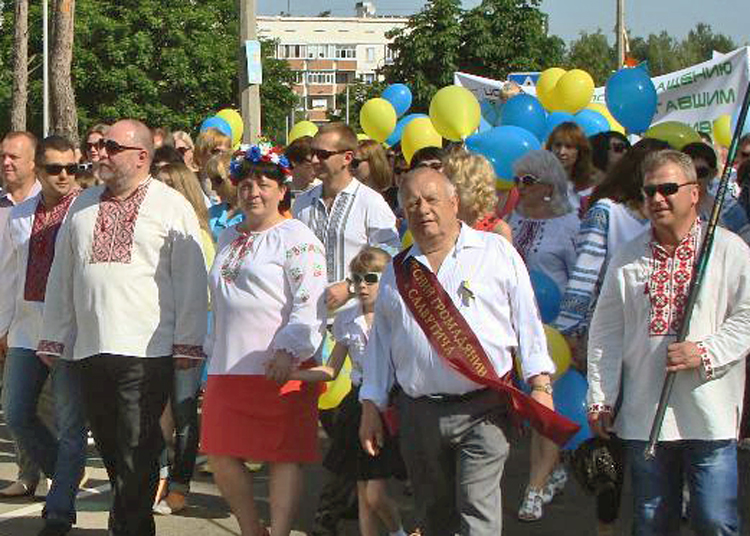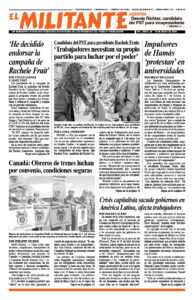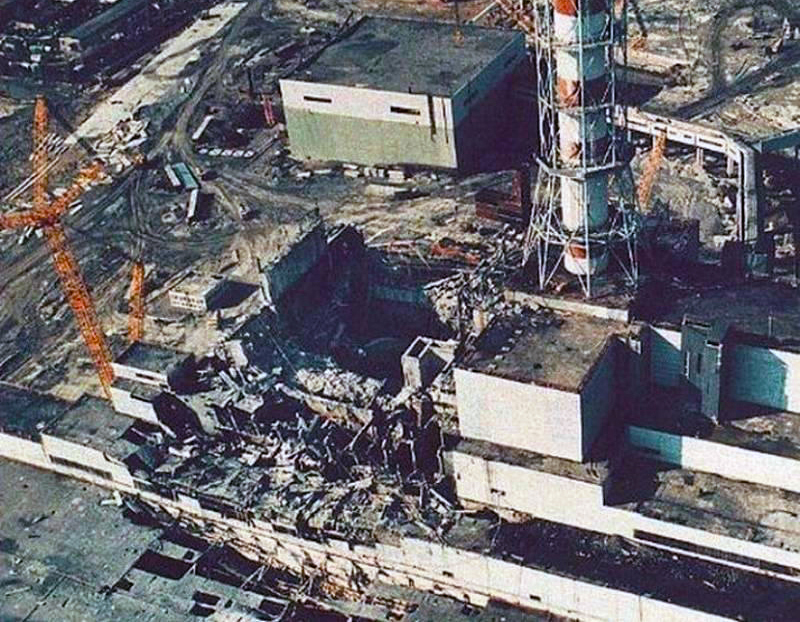When Moscow’s military invaded Ukraine in February 2022, assured by President Vladimir Putin of an easy victory, they were rapidly repelled from Kyiv, the capital, as working people put up fierce resistance. But 60 miles to the north Russian troops occupied the still highly radioactive Chernobyl reactor site on the Belarus border for over a month. This has had deadly consequences for some of them.
On April 26, 1986, an explosion and 10-day fire at one of the reactors in the Chernobyl power plant became the worst nuclear meltdown in history. Ukraine was then still part of the Soviet Union. This man-made disaster stemmed from the bureaucratic disregard for the safety of millions by the Stalinist regime in Moscow. The capitalist rulers in Russia today show no greater concern for working people — in uniform or not — than did the Stalinist bureaucrats in 1986.

A Militant reporting team led by current editor John Studer visited the Chernobyl exclusion zone in 2014, at the invitation of the union there. They described the devastating, long-term social, medical and environmental consequences. They also reported on support for Ukrainian independence by the workers there, hundreds of whom continue to manage the site.
Over 2,000 square miles were seriously contaminated. More than 8.5 million residents of Ukraine, Belarus and Russia received severe doses of radiation and over half a million eventually died.
The nuclear reactors’ flawed design and government neglect led to the meltdown. Its effects were worsened by Moscow’s decision not to build a containment shell that would have kept most radiation from escaping. The Soviet government was callously indifferent as thousands of the plant’s workers and all its volunteer firefighters, with little or no protection, selflessly fought to contain the fire. Within three months 28 were dead and 19 more died in subsequent years, with many more suffering radiation poisoning.
Tens of thousands of other Ukrainian workers, mostly volunteers — known as “liquidators” — came to Chernobyl to try and bury the radioactive site. They also were affected.
The bureaucratic regime in Moscow told workers at the site not to worry and delayed any evacuation of the area. No measures were taken to avoid residents consuming contaminated milk and vegetables. Over 6,000 children and youth contracted thyroid cancer as a result.
The Kremlin tried to cover up the disaster until a radioactive cloud was detected 800 miles away over Sweden. Telling the truth about the scale of the disaster remained prohibited for many years. The catastrophe accelerated the coming apart of the Soviet Union, which disintegrated in 1991, with Ukraine and other Soviet republics declaring their independence.
Moscow treated working people in the surrounding area like cattle, bureaucratically displacing hundreds of thousands. Few resources were allocated to treat victims of radiation and assist those whose lives were turned upside down.
Revolutionary Cuba steps in
In a sharp class contrast, Cuba’s revolutionary government responded, sending doctors and setting up clinics in affected areas of Ukraine, Belarus and Russia. By 1990, it began selflessly providing medical care and all other assistance in Cuba to the sickest, mainly young, victims of Chernobyl. They came overwhelmingly from Ukraine. More than 25,000 were given exceptional treatment free of charge at Tarará, a special medical and rehabilitation camp the Cuban government set up outside Havana.
The Chernobyl program was striking confirmation of the proletarian internationalism of Cuba’s socialist revolution. Even at the height of what Cubans call the “special period” of economic hardship in the 1990s after the Soviet Union collapsed, there was no letup in the Tarará program, with its free medical treatment to all who needed it. This only ended in 2011, when the Ukrainian government stopped providing transportation to patients to get to Havana. Efforts to restart the program have not succeeded.
The effects of the Chernobyl disaster struck again on hundreds of Russian soldiers in 2022. Over 2,000 troops were ordered to occupy the condemned site and set up a military base. The Russian authorities ignored warnings of dangers by workers stationed near there.
Hundreds of them dug trenches, stirring up contaminated soil, and camped in the notoriously radioactive Red Forest. This is 6 square miles of woods turned red by radiation levels that were much higher than Ground Zero in the 1945 atomic bombing of the Japanese population of Hiroshima by Washington. To stay for more than a few minutes is considered dangerous, but Russian troops were forced to live there for 35 days!
The troops had to drive over reopened roads through the Chernobyl exclusion zone, ignoring hazard warning signs. Irradiated equipment, furnishings and souvenirs were ransacked from the site.
The first soldiers began dying within weeks from radiation sickness. In a Feb. 29 interview by the state news agency Ukrinform, Oleksander Menzul, a Ukrainian nuclear engineer, said that there is little chance that any survivors are left from the hundreds who had been stationed in the Red Forest.
A few days after entering Chernobyl, Russian forces also took control of the Zaporizhzhia Nuclear Power Plant, located in southeastern Ukraine. The Militant ’s reporting team visited this site as well, meeting with members of the union there. It’s the largest nuclear power plant in Europe and now sits in the middle of a conflict zone.
The plant ceased operation but the Russian occupiers use it as a military base. A skeleton crew of Ukrainian workers is kept to maintain the reactors. They are subject to physical abuse and worse, while forced to get Russian passports and submit to the occupiers’ contracts. The International Atomic Energy Agency has complained about the dangers posed by shelling and drone strikes close to the plant.
Moscow recently announced plans to restart running the plant, to generate power for occupied Crimea, which would greatly increase its vulnerability to a nuclear disaster.


